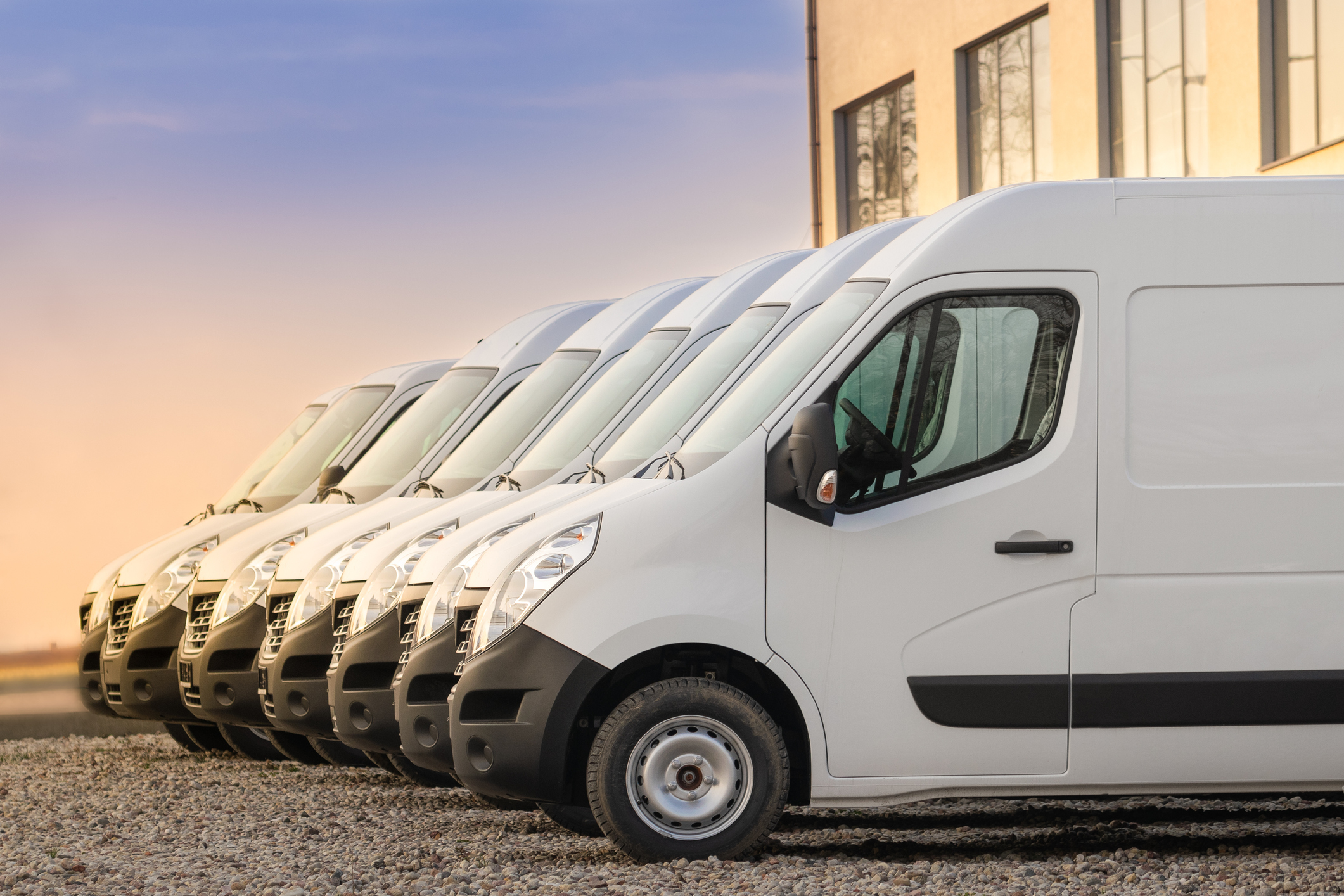Is Asset Utilisation the Key to a Fully Optimised Fleet?
Written by
New Business Development Manager
Wednesday 22nd December 2021
Last updated: 4th February 2025

Companies of every size and shape are under constant pressure to reduce the cost, carbon and risk of business mobility, whilst at the same time increasing the efficiency and productivity of their vehicles and employees. But what does this actually mean in practice? Is there a clearly defined optimum level to reach and what steps should be taken to get there.
The answer is of course, yes and no. Yes, there is an optimum level and no, it doesn’t apply to everyone. Optimising your fleet depends on determining the things which are most important to your business and finding the right balance between these goals.
In truth, the real key to fully optimising your fleet is asset utilisation or, to put it another way, getting the maximum use and value out of every vehicle with the minimum amount of financial cost, fleet risk or environmental impact. So where do you start?
Usage vs Utilisation
You might think that as long as vehicles are in constant use that you are well on the way to a fully optimised fleet – and you may be right, but not necessarily, because usage and utilisation are not the same thing.
For example, a vehicle may be out on the road being used, but is it operating at its full capacity, either in terms of people, products or equipment? Likewise, if a journey takes twice as long because of travelling at peak times, the usage during this period may be 100% but it’s optimal utilisation is in fact half that.
To understand the degree to which vehicles are delivering maximum value relies on an accurate understanding of key utilisation metrics such as:
- Hours of active utilisation
- Benchmark times for key journeys/activities
- Out of hours usage
- Drive time vs on-site/at-location idle time
- Distances travelled
- Arrival and departure times
- Vehicle capacity vs usage (products/equipment/people)
The full list of areas to measure will depend upon the specifics of your fleet and the range of applications vehicles are used for, but one common factor is that collecting this data is not always as simple as it sounds. Often, this is because the information needed is stored on different platforms and in a variety of formats. Other times, the data needed is not currently being recorded at all.
The right telematics system can make a big difference but, even then, turning this information into genuine insights requires detailed analysis and advice from experts capable of accurately interpreting the data and putting it into context based on real-world experiences of comparable business applications.
Making the Right Decisions
Once you have an accurate picture of your fleet’s asset utilisation levels, you will probably want to make some changes but, before you do, it is important to carry out a detailed assessment of the likely impact of each proposed action.
For example, increasing the hours each vehicle is used could reduce the total number of cars or vans required, but what impact will this have on additional maintenance and servicing requirements. Could this lead to a need for more short-term hire vehicles to minimise downtime and how will your choice of vehicle impact these requirements?
As you can see, decisions taken to achieve one goal can have either a positive or negative affect on another. Understanding this and being able to measure the impact of each decision will help you find the right balance for your business.
Vehicle Choice
Vehicles capable of fulfilling more than one role could help drive up utilisation rates whilst enabling the business to respond to fluctuating levels of demand. Likewise, understanding real-world fuel efficiency and servicing requirements can lead to choices that reduce cost and unscheduled downtime.
Could not render component of type: BlockGridLayout_Blog2ColMain
This likely happened because the partial view {site}/grid/DocTypeGridEditor/BlockGridLayout_Blog2ColMain could not be found.
The partial view 'Base/grid/DocTypeGridEditor/BlockGridLayout_Blog2ColMain' was not found. The following locations were searched: /App_Plugins/Views/Render/Base/grid/DocTypeGridEditor/BlockGridLayout_Blog2ColMain.cshtml /App_Plugins/Views/Shared/Base/grid/DocTypeGridEditor/BlockGridLayout_Blog2ColMain.cshtml /App_Plugins/Views/Partials/Base/grid/DocTypeGridEditor/BlockGridLayout_Blog2ColMain.cshtml /App_Plugins/Views/MacroPartials/Base/grid/DocTypeGridEditor/BlockGridLayout_Blog2ColMain.cshtml /Views/Base/grid/DocTypeGridEditor/BlockGridLayout_Blog2ColMain.cshtml /Views/Shared/Base/grid/DocTypeGridEditor/BlockGridLayout_Blog2ColMain.cshtml /Views/Partials/Base/grid/DocTypeGridEditor/BlockGridLayout_Blog2ColMain.cshtml /Views/MacroPartials/Base/grid/DocTypeGridEditor/BlockGridLayout_Blog2ColMain.cshtml /Views/Render/Base/grid/DocTypeGridEditor/BlockGridLayout_Blog2ColMain.cshtml /Views/Shared/Base/grid/DocTypeGridEditor/BlockGridLayout_Blog2ColMain.cshtml /Views/Partials/Base/Grid/DocTypeGridEditor/Base/grid/DocTypeGridEditor/BlockGridLayout_Blog2ColMain.cshtml /Views/Partials/blockgrid/Components/Base/grid/DocTypeGridEditor/BlockGridLayout_Blog2ColMain.cshtml /Views/Partials/blocklist/Components/Base/grid/DocTypeGridEditor/BlockGridLayout_Blog2ColMain.cshtml /Views/Partials/richtext/Components/Base/grid/DocTypeGridEditor/BlockGridLayout_Blog2ColMain.cshtml
Could not render component of type: BlockGridLayout_Blog2ColMain
This likely happened because the partial view {site}/grid/DocTypeGridEditor/BlockGridLayout_Blog2ColMain could not be found.
The partial view 'Base/grid/DocTypeGridEditor/BlockGridLayout_Blog2ColMain' was not found. The following locations were searched: /App_Plugins/Views/Render/Base/grid/DocTypeGridEditor/BlockGridLayout_Blog2ColMain.cshtml /App_Plugins/Views/Shared/Base/grid/DocTypeGridEditor/BlockGridLayout_Blog2ColMain.cshtml /App_Plugins/Views/Partials/Base/grid/DocTypeGridEditor/BlockGridLayout_Blog2ColMain.cshtml /App_Plugins/Views/MacroPartials/Base/grid/DocTypeGridEditor/BlockGridLayout_Blog2ColMain.cshtml /Views/Base/grid/DocTypeGridEditor/BlockGridLayout_Blog2ColMain.cshtml /Views/Shared/Base/grid/DocTypeGridEditor/BlockGridLayout_Blog2ColMain.cshtml /Views/Partials/Base/grid/DocTypeGridEditor/BlockGridLayout_Blog2ColMain.cshtml /Views/MacroPartials/Base/grid/DocTypeGridEditor/BlockGridLayout_Blog2ColMain.cshtml /Views/Render/Base/grid/DocTypeGridEditor/BlockGridLayout_Blog2ColMain.cshtml /Views/Shared/Base/grid/DocTypeGridEditor/BlockGridLayout_Blog2ColMain.cshtml /Views/Partials/Base/Grid/DocTypeGridEditor/Base/grid/DocTypeGridEditor/BlockGridLayout_Blog2ColMain.cshtml /Views/Partials/blockgrid/Components/Base/grid/DocTypeGridEditor/BlockGridLayout_Blog2ColMain.cshtml /Views/Partials/blocklist/Components/Base/grid/DocTypeGridEditor/BlockGridLayout_Blog2ColMain.cshtml /Views/Partials/richtext/Components/Base/grid/DocTypeGridEditor/BlockGridLayout_Blog2ColMain.cshtml
The Hidden Benefit of Increased Asset Utilisation
Every time a vehicle carries less than its full load, when two journeys are made instead of one, or when vehicles spend most of their time unused because they are only assigned to one driver, it means that there are additional vehicles on the road and on your fleet.
Improving asset utilisation rates means more than just a reduction in mobility costs across your entire business. With fewer vehicles manufactured and less cars, vans, and lorries on the road, it provides a cleaner environment for all of us.
Oliver Salkeld
Business Development Manager
Novuna Vehicle Solutions
oliver.salkeld@novunavehiclesolutions.co.uk
Oliver joined Novuna Vehicle Solutions in 2018 and, having built on his extensive expertise in fleet related customer service, now works closely with fleet operators in all sectors, helping them to make fleet decisions that are right for their business and drivers.

